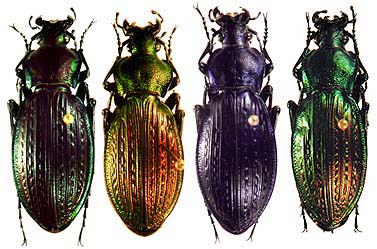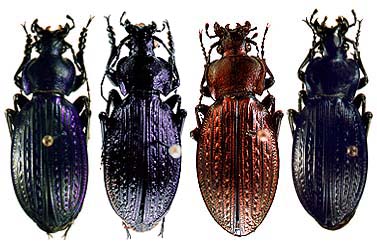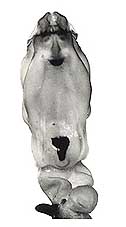 |
 |
Carabus (Morphocarabus) simulator Kraatz, 1876 bona sp.
Distribution: East Serbia, East from the Velika Morava river.
Diversity: From the morphological and phylogenetic standpoint simulator populations are exceptionally interesting. Phenotypically, they are almost perfect copies of French monilis species populations, especially of some its subspecies (e.g. ssp. monilis consitus). However, in the endophallus morphology simulator is closest to the bjelasnicensis populations. Simulator populations are rather homogeneous morphologically in their own geographical areal. The species is polychrome and with relatively few variations in the size or sculpture of elytrae ( smaller, blue coloured specimens were described as var. serbicus Hopffgarten, 1878, while red and green coloured specimens were described as var. polychloros Beuthin, 1885). In colour variation simulator completely repeats colour variation present in French monilis. Subspecies tekijensis stat. nov. described from the vicinity of Tekija, a typical refugial habitat at the exit of Iron Gate, shows a rougher elytra sculpture and smaller size of specimens. In this subspecies lateral lobes of distal lobe of endophallus are less pronounced than in nominal simulator.
Remark: It is not very probable that the name of versicolor Frivaldszky, 1835 should be tied to simulatror populations from East Serbia. Taking into acount that versicolor was described from vicinity of Sliven (East Bulgaria) it is not probable that simulator and versicolor are so close to represent one taxon, bearing in mind the speciation degree among other Balkans populations. In any case, verification through endophallus analysis would solve the existing nomenclature problem of priority of versicolor or simulator names.
 |
 |
Carabus
(Morphocarabus)
simulator
Kraatz, 1876 |
 |
 |
Carabus
(Morphocarabus)
simulator ssp.
tekijensis
Tosevski, 1990 |
 Back...
Back...